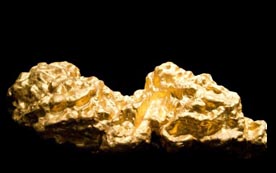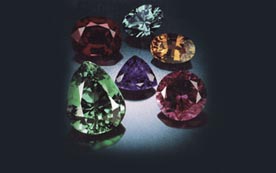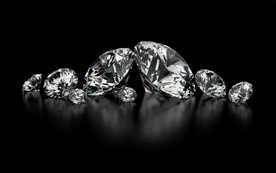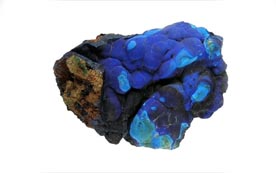Ancient Greece until today
12 Dec 2012- Details
- Written by Saonl
THE MIKINAIC ERA
 In the era of Mikinaic civilization 1600-1400 BC there is a big flourish, in citys-states of continental Greece, in metal art (copper, silver tin, gold) and there is a big development of goldsmith and of processing of semi valuable stone (stamp marking) (stonework).
In the era of Mikinaic civilization 1600-1400 BC there is a big flourish, in citys-states of continental Greece, in metal art (copper, silver tin, gold) and there is a big development of goldsmith and of processing of semi valuable stone (stamp marking) (stonework).
Many tombs excavations reveal copper or silver tools, swords and lots of gold jewels like that, that was found in the royal tombs of the Mikinais. Most of these jewels are forged outwardly with gold decoration like the golden royal masks of the early micinaic era. It is common though the combination of other material like silver, copper, enamel and semi valuable stones. These jewels were worn by kings, aristocrats, and it meant power, wealth.  Crowns and bracelets from thin plates of gold, decorated by spiral motives. Brooches of gold, silver or copper for the chest with round heads of oreia, crystal or ivory. Heavy belts of gold plates decorated by geometrical designs and other silver elements. Likewise golden rings-trademarks symbols with elliptical slings often decorated by engravings like stamp markings or little pieces of metal glueded together or enamel and other semi valuable stones. The Micinaic necklaces from the mid of 1500 BC are processed with golden metals appearing designs from animal and vegetable life like scallop-shells, octopus and this variety is enriched by the innovation of bioformed pearl. Among all these golden elements of necklaces, the Micinaic goldsmiths placed pearls of achat, amethyst, lasp and blue azure rancid in different figures or even simple mase of glass build on a pearl over stone matrix.
Crowns and bracelets from thin plates of gold, decorated by spiral motives. Brooches of gold, silver or copper for the chest with round heads of oreia, crystal or ivory. Heavy belts of gold plates decorated by geometrical designs and other silver elements. Likewise golden rings-trademarks symbols with elliptical slings often decorated by engravings like stamp markings or little pieces of metal glueded together or enamel and other semi valuable stones. The Micinaic necklaces from the mid of 1500 BC are processed with golden metals appearing designs from animal and vegetable life like scallop-shells, octopus and this variety is enriched by the innovation of bioformed pearl. Among all these golden elements of necklaces, the Micinaic goldsmiths placed pearls of achat, amethyst, lasp and blue azure rancid in different figures or even simple mase of glass build on a pearl over stone matrix. 

GEOMETRICAL ERA
 After the end of Micinaic world, in the dark ages (1100-900) goldsmith have nothing to show compared to the wealth and fantasy of early ages. The Greek world and all the Eastern Mediterranean go through an era of conflicts between nations and race confusion that built new nation-social groups. From that dark age, known as geometrical, only a few jewels are saved. But the tradition that was created will survive combined with new influence from the North in copper and iron mostly jewels since valuable metals are hard to found. The new flourishment at jewel making will bring later, right after 800 BC the contacts with the evolved East and Egypt.
After the end of Micinaic world, in the dark ages (1100-900) goldsmith have nothing to show compared to the wealth and fantasy of early ages. The Greek world and all the Eastern Mediterranean go through an era of conflicts between nations and race confusion that built new nation-social groups. From that dark age, known as geometrical, only a few jewels are saved. But the tradition that was created will survive combined with new influence from the North in copper and iron mostly jewels since valuable metals are hard to found. The new flourishment at jewel making will bring later, right after 800 BC the contacts with the evolved East and Egypt.
ANCIENT PERIOD
 From 800 BC the Greek horizons are widened again and new sources of gold from Krimaia and Lydia of M. Asia enriched the valuable first material Greek colonies were made from the Black Sea and M. Asia until the western Mediterranean with greater of course the Greek colonies of Taranta and Syracuse in Sicely and so, trade began once more with near East and Phoinice.So, it is easy to understand that eastern influences mark the Greek variety of goldsmith offering new elements.
From 800 BC the Greek horizons are widened again and new sources of gold from Krimaia and Lydia of M. Asia enriched the valuable first material Greek colonies were made from the Black Sea and M. Asia until the western Mediterranean with greater of course the Greek colonies of Taranta and Syracuse in Sicely and so, trade began once more with near East and Phoinice.So, it is easy to understand that eastern influences mark the Greek variety of goldsmith offering new elements.  Mythical forms & sphinxes, exotic monsters, flying horses, plants and animals, vultures and animals decorate the Greek jewels, with hammered technic on the matrix. Additionally we have the appearance of big and impressive jewel with new technic and a decoration of enamel.700 BC it's the first time that, human shapes and narratory mythical scenes in sculptured hammered dimisioned formed, is appeared in Greek jewels with special brass chisels.
Mythical forms & sphinxes, exotic monsters, flying horses, plants and animals, vultures and animals decorate the Greek jewels, with hammered technic on the matrix. Additionally we have the appearance of big and impressive jewel with new technic and a decoration of enamel.700 BC it's the first time that, human shapes and narratory mythical scenes in sculptured hammered dimisioned formed, is appeared in Greek jewels with special brass chisels.  The ancient Greek societys of 600 BC in the eve of Persian wars used jewels not only as symbols of economic success but as valuable tradeable kinds showing in that way the emerge of "GOLDEN CENTURY" of classical ages. During the ancient age 600-475 BC and while the art metal shows a great evolution and flourish, the sector of goldsmith in Greek ground has only a little to show. That lack of gold jewel could be explained by the Persian wars and by the fact that Persian got middle east under control at that time, and
The ancient Greek societys of 600 BC in the eve of Persian wars used jewels not only as symbols of economic success but as valuable tradeable kinds showing in that way the emerge of "GOLDEN CENTURY" of classical ages. During the ancient age 600-475 BC and while the art metal shows a great evolution and flourish, the sector of goldsmith in Greek ground has only a little to show. That lack of gold jewel could be explained by the Persian wars and by the fact that Persian got middle east under control at that time, and  consequently the available amount of gold. But during all this period the continuity of jewel making is not stopped because Greek jewel makers and goldsmiths offer their art outside Greece, in foreign market, creating in that way Greek-scythic, Greek-thracic, Greek-etrousk and Greek-Celtic jewel and by the end of Persian wars, Greek jewel making and goldsmith continued as none stop existed. Its exceptional pieces of art with certain important in the technic.
consequently the available amount of gold. But during all this period the continuity of jewel making is not stopped because Greek jewel makers and goldsmiths offer their art outside Greece, in foreign market, creating in that way Greek-scythic, Greek-thracic, Greek-etrousk and Greek-Celtic jewel and by the end of Persian wars, Greek jewel making and goldsmith continued as none stop existed. Its exceptional pieces of art with certain important in the technic.
 The victorious wars between 490-470 BC brought Greece an enormous amount of gold and goldsmith met a new flourish. In classic period 475-330 BC there is a preference in a new "wire" technic and in enamel, that was used in micinaic period but now these two element are combined. These classic jewel are decorated with human shapes but also with animals and flowers on bracelet places. From Eretrias tombs we found great specimens, masterpieces of silver golden era. There is a great emphasis in earings which are made really complicated with tiny humanphormes and new elements appealing gods and godesses. The same goes for necklaces too.
The victorious wars between 490-470 BC brought Greece an enormous amount of gold and goldsmith met a new flourish. In classic period 475-330 BC there is a preference in a new "wire" technic and in enamel, that was used in micinaic period but now these two element are combined. These classic jewel are decorated with human shapes but also with animals and flowers on bracelet places. From Eretrias tombs we found great specimens, masterpieces of silver golden era. There is a great emphasis in earings which are made really complicated with tiny humanphormes and new elements appealing gods and godesses. The same goes for necklaces too.  Correspondingly, an important novelty makes its appearance in the morphology of classical jewels. The bracelets became cylinder, like big hollow ring - links with endings of animals heads-mostly ram heads - that look each other. The shape of the snake is also appeared for the first time in bracelets and rings.
Correspondingly, an important novelty makes its appearance in the morphology of classical jewels. The bracelets became cylinder, like big hollow ring - links with endings of animals heads-mostly ram heads - that look each other. The shape of the snake is also appeared for the first time in bracelets and rings.
ELLINISTIKI PERIOD
 The new era that raises between the long and rather destructive Peloponnesian war for the city-states of Greece is an era of important prosperity and growing power for the royal court of Macedonia. The big changes that mark the Greek period 330-27 BC are due to Alexander's the Great conquers and his contacts in Egypt and East, that cannot leave uninfluenced the goldsmith and jewel making. It's not only the abundance that surprices but also the creation of a new type of jewel with
The new era that raises between the long and rather destructive Peloponnesian war for the city-states of Greece is an era of important prosperity and growing power for the royal court of Macedonia. The big changes that mark the Greek period 330-27 BC are due to Alexander's the Great conquers and his contacts in Egypt and East, that cannot leave uninfluenced the goldsmith and jewel making. It's not only the abundance that surprices but also the creation of a new type of jewel with  new decoration themes. It is now established the multi colorness that is succeed with the use of semi valuable and sometimes valuable stone like amethyst and granat. The findings of royal Macedonian jewel from Verginas tombs reveal the high level of
new decoration themes. It is now established the multi colorness that is succeed with the use of semi valuable and sometimes valuable stone like amethyst and granat. The findings of royal Macedonian jewel from Verginas tombs reveal the high level of  knowledge and technics of goldsmith. Indeed its astonishing the prefecture of the decorated jewels and other useful items of that time. There is a great emphasis in the mix of metals that imitate the colour of gold, like the famous Derveni's Crater. There the intense yellow colour is coming from the big capacity of the mix of copper with tin. From ancient texts we are informed that during the classical times goldbearing areas are the island Thasos, Sifnos and Cyprus.
knowledge and technics of goldsmith. Indeed its astonishing the prefecture of the decorated jewels and other useful items of that time. There is a great emphasis in the mix of metals that imitate the colour of gold, like the famous Derveni's Crater. There the intense yellow colour is coming from the big capacity of the mix of copper with tin. From ancient texts we are informed that during the classical times goldbearing areas are the island Thasos, Sifnos and Cyprus.
ROMAN PERIOD
 The conquest of Greece by the Romans in the end of 100 BC doesn't mean the end of the great greek civilization, since it is wide known that the Romans adopted the greek philosophy and art with culture. The goldsmith of the Roman period is a continuity of the greek tradition with a gradual simplification in its form. The “wire” technique is giving away while the increasing preference to valuable and semivaluable stones, like pearls that we first time see to appear, is taking place, as decoration to jewels. In Roman period is very impressive the evolution of stonework, while it's the first appearance in history of jewel the bosom jewels which are constisted by a small basic element hanged by a complicated and rather fat chain. These medallion constisted by a gold coin that appeared the face of Roman emperors. Correspondingly its used a new technique the “perforated” technique which meant the abstraction of bunions part that the jewel had with special cutting chisels creating in this way shadings “azour”. These new trends lead towards the ancientcristianic – Byzantine period of goldsmith.
The conquest of Greece by the Romans in the end of 100 BC doesn't mean the end of the great greek civilization, since it is wide known that the Romans adopted the greek philosophy and art with culture. The goldsmith of the Roman period is a continuity of the greek tradition with a gradual simplification in its form. The “wire” technique is giving away while the increasing preference to valuable and semivaluable stones, like pearls that we first time see to appear, is taking place, as decoration to jewels. In Roman period is very impressive the evolution of stonework, while it's the first appearance in history of jewel the bosom jewels which are constisted by a small basic element hanged by a complicated and rather fat chain. These medallion constisted by a gold coin that appeared the face of Roman emperors. Correspondingly its used a new technique the “perforated” technique which meant the abstraction of bunions part that the jewel had with special cutting chisels creating in this way shadings “azour”. These new trends lead towards the ancientcristianic – Byzantine period of goldsmith.
BYZANTINE PERIOD
THE MODERN GREECE PERIOD
 Having as main guide the most present memories of Byzantine civilization the modern Greece goldsmith continues an even older atavistic tradition. It's assimilate and remould an aesthetics bassed not only to previous elements but in elements borrowed from the West and Islamic East. The modern Greek jewel in the difficult and hard years of the Turkish occupation is characterized by natural inspiration and originality. But really extraordinary is the passion of the simple anonymous jewelmakers to create with big patience
Having as main guide the most present memories of Byzantine civilization the modern Greece goldsmith continues an even older atavistic tradition. It's assimilate and remould an aesthetics bassed not only to previous elements but in elements borrowed from the West and Islamic East. The modern Greek jewel in the difficult and hard years of the Turkish occupation is characterized by natural inspiration and originality. But really extraordinary is the passion of the simple anonymous jewelmakers to create with big patience  something special and unique with the cheap and nastly materials that he had because of the general poorness of the conquered Greek people. So he uses mostly bronze and silver mixed in large quantities with copper, which was added with arsenicon to get some glow, while when he could afford it, the jewels where gilded. Depending the way of manifacture the modern greek jewels are separated in hammered, riddled, casted and wired. The wired jewel especially are rather flourishing and the savati, a kind of black enamel, and the valuable enamel with the glass coloured stone is often a decorating element.
something special and unique with the cheap and nastly materials that he had because of the general poorness of the conquered Greek people. So he uses mostly bronze and silver mixed in large quantities with copper, which was added with arsenicon to get some glow, while when he could afford it, the jewels where gilded. Depending the way of manifacture the modern greek jewels are separated in hammered, riddled, casted and wired. The wired jewel especially are rather flourishing and the savati, a kind of black enamel, and the valuable enamel with the glass coloured stone is often a decorating element.  Bracelets with many small elements or coins that hang over the forehead, bosom jewels with chains and crosses decorated the woman's chest, necklaces with chains that often reach the elbows, while primary role play the belts. The belts in cretemikinaic and Byzantine period had an symbolic character and it used to show the social place and the axion of the person who wore them. Nowadays 2.500 laboratories product every year jewels equally beautiful and worthy of the long tradition and history.
Bracelets with many small elements or coins that hang over the forehead, bosom jewels with chains and crosses decorated the woman's chest, necklaces with chains that often reach the elbows, while primary role play the belts. The belts in cretemikinaic and Byzantine period had an symbolic character and it used to show the social place and the axion of the person who wore them. Nowadays 2.500 laboratories product every year jewels equally beautiful and worthy of the long tradition and history.
CHRIS GOURGIOTIS

 beat
beat





 The choice of the wedding ring that will accompany the finger of the right hand forever is a very important case. What is the symbolization of a Wedding ring?? When the wedding ring established as accustom and by whom? First of all we must clearify that an Engagement ring and a Wedding ring is not the same. The engagement ring borned after 13th century when Pope Innokentios. The P declared that it should be a period between the engagement and the marriage.
The choice of the wedding ring that will accompany the finger of the right hand forever is a very important case. What is the symbolization of a Wedding ring?? When the wedding ring established as accustom and by whom? First of all we must clearify that an Engagement ring and a Wedding ring is not the same. The engagement ring borned after 13th century when Pope Innokentios. The P declared that it should be a period between the engagement and the marriage.







